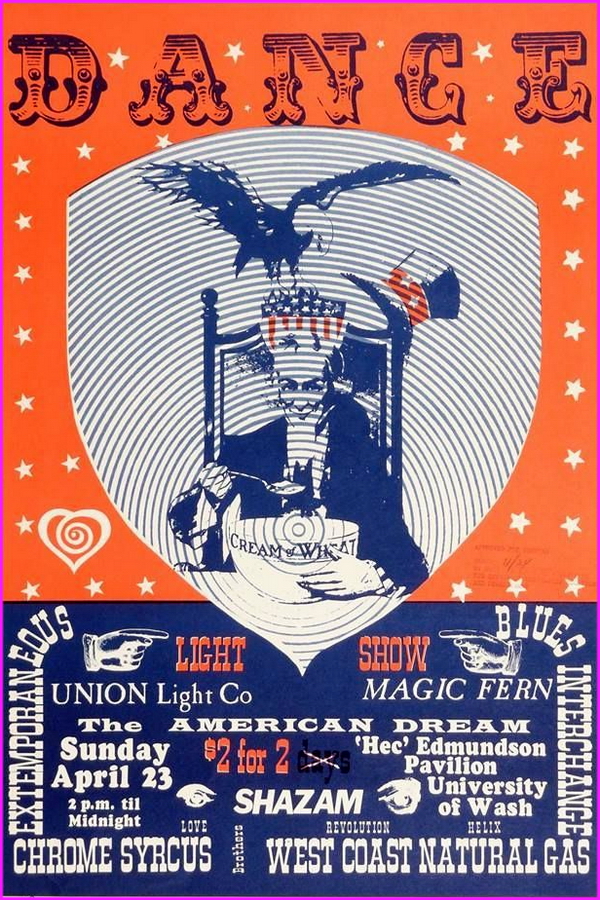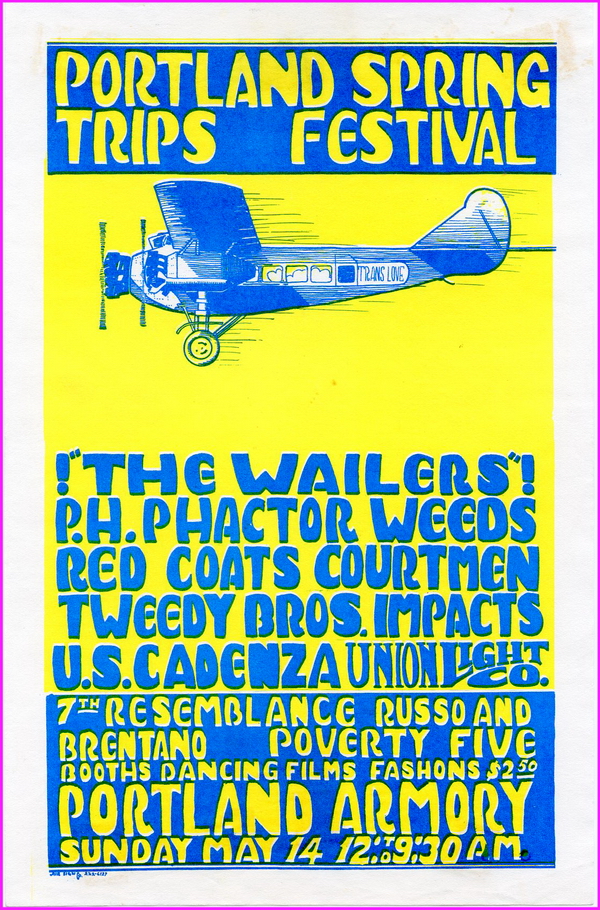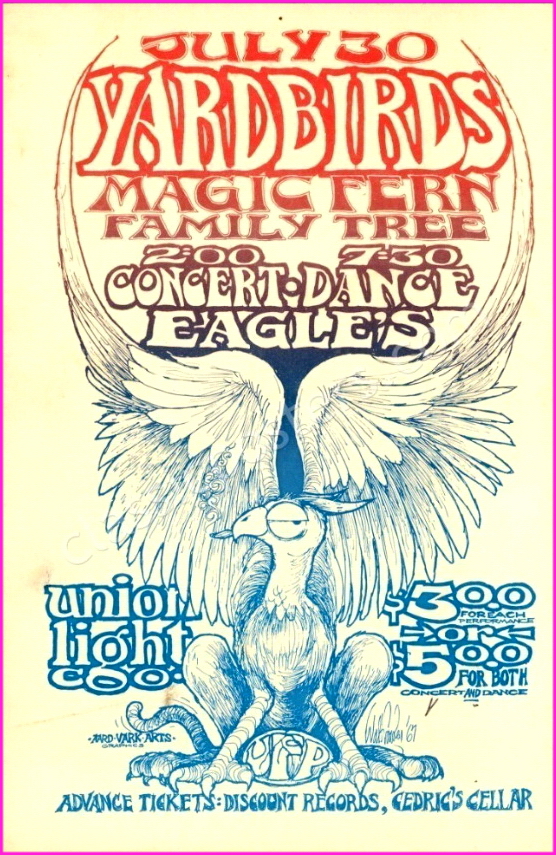Union Light Company |
Seattle based Light Show that ran between 1966 and 1968 that originally did lots of shows with Lux Sit And Dance |
Lightshows in SeattleBy Robin Oppenheimer Posted May 14th 2003 HistoryLink.org Essay 4173 - https://www.historylink.org/File/4173 |
The first lightshow in the Seattle area occurred on November 5, 1966, when KRAB radio (one of the first community-based FM radio stations in the country) held a benefit concert in Kirkland. It was this event that birthed both the Union Light Company and Lux Sit and Dance lightshows. Though short-lived, this history is rich in stories and characters, and connects Seattle to both East Coast and West Coast lightshow histories that had different roots, cultures, and aesthetics. The Union Light Company (1966-1968) The Union Light Company (ULC) was at first a fictional name for a non-existent light show that then formed spontaneously around the 8-10 people who showed up to jam together and present their own images and colors, using their own unplanned mix of film, overhead, and slide projectors. Ron McComb, Lorenzo W. Milam (founder of KRAB radio), and Charles Kraft came up with the name “Union Light Company.” The Union Light Company (ULC) consisted of six artists who lived and worked together during the time of the lightshow’s short run in Seattle and New York City. The six members were Carol Burns, Ron McComb, Annie Duggan, Ron Moe, Julia Shumm, and Quentin Rhoton, and they each performed different aspects of creating, producing, and presenting the lightshow. Ron McComb studied art at the Portland Museum Art School. He worked with Quentin Rhoton and Arnie Duggan to wrangle all the lightshow equipment, shopping in thrift stores for used slide projectors, motors, overhead projectors, color wheels, film projectors, lab stands, clamps, theatrical lights, etc. Carol Burns studied to be a documentary filmmaker at Stanford University near San Francisco, where she saw her first light shows in 1965-1966. Carol Burns likens the ULC lightshow to a jazz performance. It was not a series of random images and colors thrown around in a room. It had themes with variations, based solely on the band’s music and the uniquely spontaneous interaction the company felt with the audience and the music that night. Their time in Seattle was short, lasting from their first coming-together in November 1966, to late July 1967, when they left Seattle with the band Country Joe and the Fish to be their lightshow in New York City. After an adventure-filled trip across the country in an old hearse, the ULC performed at the Café Au Go Go with Country Joe and the Fish. According to Ron McComb, he was “the real thing” and he was the ULC’s “bread and butter” for about six months. He bought the group a studio space with a darkroom, copy stand, and expense account; paid them to develop their lightshow; and made them the “house” lightshow at an old Loew’s movie theater that was converted to a dance hall called The World Theater in Westchester Co. outside Manhattan. They played with performers like Tiny Tim, The Mothers of Invention, and many others. ULC stayed in a rent-free loft in lower Manhattan and worked with a group called The Group Image that Carol Burns describes as “a tribe like only New York could produce -- they own a club, have their own Band (The Group Image), do commercial advertising for hip Madison Avenue companies, work with magazines on ‘psychedelic’ layouts (they designed the Time cover on hippies).” ULC and The Group Image “moonlighted” at the Cheetah, at Broadway and 53rd, and at the Palm Gardens near there. Ron McComb adds, “I would not want to leave out Wavy Gravy and the Hog Farm at the Palm Gardens. The Group Image were hip businessmen but had no clue about how to make the Palm Gardens happen the way it did. The ULC soon realized that the Mafia ran The World dancehall where they performed, and three of the members returned to Seattle in late 1968 as the commercialization of the hippie culture ended “the dream.” “We all believed that there was going to be a new world, a new consciousness. It was a transformational time” says Ron McComb, that soon degenerated into automated lightshows and discos in the early 1970’s run by organized crime." Sources: Walt Crowley, Rites of Passage: A Memoir of the Sixties in Seattle (Seattle: University of Washington Press,1995); undated newsclippings from The Helix, and from unknown New York City publications, in Carol Burns's archive, Seattle, Washington; Don Paulson, "Sit, Lux, and Dance Lightshow," unpublished manuscript; Tom Robbins article about lightshows, Seattle magazine, 1967, newsclipping in Don Paulson’s archive; Robin Oppenheimer interviews with Carol Burns, Paul Dorpat, Ron McComb, and Don Paulson, Seattle, Washington, 2003; E.A.T. Reunion Website. |
 |
 |
 |
